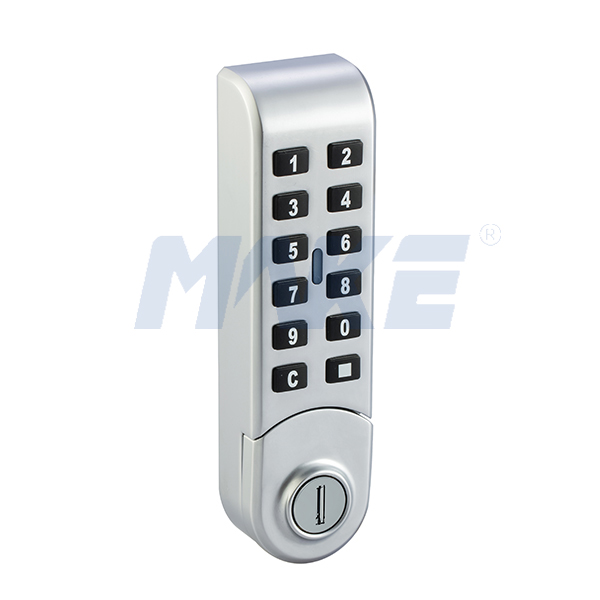Cost analysis - Are smart locks actually worthy of your cost of 150+ or even thousands of dollars?
According to several lock manufacturers and retailers in China, the manufacturing costs of an ordinary smart lock are above 500 yuan (70-ish dollars). The cost will rise with greater functionality and novelty, moreover, some big-brand smart locks are even priced over 1000 yuan. Eventually, the price will snowball into thousands of RMB on store shelves.
Those greedy intermediate traders and retailers must be blamed for this, right?
To put it simply:
Price of the product = Manufacturing Costs + Profit of Intermediate Traders + Profit of Retailer
In the current situation of Chinese smart-home market, plenty of companies market their own products, but their prices are hanging on the same level with the others. Those companies confess that the cost of product promotion, research and development are occupied too much because the market of smart lock has not fully open yet. For the company's own good, the high price, which awkwardly curbs customers' desire to buy, is a helpless choice. They also suggest that only if the idea of smart home turns into a real order will smart locks climb out of this odd circle.
The key for the future development: Stability & Cost Effectiveness
Although there are no other options, except for the high price right now, the price depends on the market demand, product's quality, etc. Both the comments of buyers in e-commerce platforms and the reviews from users in on-line communities reflect the biggest loophole of smart lock market: stability.
Smart locks require low power consumption, real-time connecting. But in reality, protocols like WiFi, ZigBee have no ability to pass adequate signal through wall. In addition, their power consumption, coverage, and other aspects are all unqualified to support the functions of smart lock.
For the moment, there are large smart home enterprises specialized in fixing loopholes, pushing out all kinds of solutions, upgrading and revamping smart locks, so that the price of them is gradually reducing.
Some smart-home companies claim that smart lock is, in fact, an entry-level product. The real value is behind the product: a chain of services for the diverse smart-home scenario.
Conclusion:
Just like most of the emerging smart home devices, smart locks face challenges in its early days too: Their main targets are home users, while only a small number of people are willing to pay for such a high price. The unsolved problems of how to improve user experience and of a proper price tag impede the popularization of smart home devices.
To truly drop down the price of product to a reasonable level, smart lock industry still has miles to go.

According to several lock manufacturers and retailers in China, the manufacturing costs of an ordinary smart lock are above 500 yuan (70-ish dollars). The cost will rise with greater functionality and novelty, moreover, some big-brand smart locks are even priced over 1000 yuan. Eventually, the price will snowball into thousands of RMB on store shelves.
Those greedy intermediate traders and retailers must be blamed for this, right?
To put it simply:
Price of the product = Manufacturing Costs + Profit of Intermediate Traders + Profit of Retailer
In the current situation of Chinese smart-home market, plenty of companies market their own products, but their prices are hanging on the same level with the others. Those companies confess that the cost of product promotion, research and development are occupied too much because the market of smart lock has not fully open yet. For the company's own good, the high price, which awkwardly curbs customers' desire to buy, is a helpless choice. They also suggest that only if the idea of smart home turns into a real order will smart locks climb out of this odd circle.
The key for the future development: Stability & Cost Effectiveness
Although there are no other options, except for the high price right now, the price depends on the market demand, product's quality, etc. Both the comments of buyers in e-commerce platforms and the reviews from users in on-line communities reflect the biggest loophole of smart lock market: stability.
Smart locks require low power consumption, real-time connecting. But in reality, protocols like WiFi, ZigBee have no ability to pass adequate signal through wall. In addition, their power consumption, coverage, and other aspects are all unqualified to support the functions of smart lock.
For the moment, there are large smart home enterprises specialized in fixing loopholes, pushing out all kinds of solutions, upgrading and revamping smart locks, so that the price of them is gradually reducing.
Some smart-home companies claim that smart lock is, in fact, an entry-level product. The real value is behind the product: a chain of services for the diverse smart-home scenario.
Conclusion:
Just like most of the emerging smart home devices, smart locks face challenges in its early days too: Their main targets are home users, while only a small number of people are willing to pay for such a high price. The unsolved problems of how to improve user experience and of a proper price tag impede the popularization of smart home devices.
To truly drop down the price of product to a reasonable level, smart lock industry still has miles to go.


